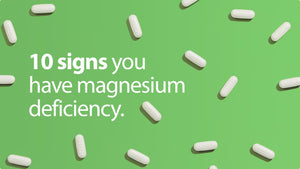Excerpted with permission from the book Mercury Detoxification: The Natural Way to Remove Mercury from Your Body by Tom McGuire, DDS.
To fully understand the value and importance of a mercury detoxification program I feel it is essential to have the basic information about how destructive chronic mercury poisoning can be to your health. If your interest goes beyond this brief introduction more detailed information will be found in A Mouth Full of Poison. You can participate in a detoxification program without this knowledge but once you realize just how insidious and damaging this poison is to your health, you'll be even more motivated to commit to the program.
Mercury, Mercury Everywhere!
There was a time in our evolution when human beings didn't have a problem removing the small amounts of mercury they were exposed to from the natural environment. Most of the mercury early humans were exposed to was in its least toxic form, inorganic mercury. Thus, over millions of years the human body was able to evolve its own system of safely removing it.
The system the body uses to remove mercury -- which for simplicity I will call the immune system -- was effective because the daily exposure to mercury was in very, very, very small amounts. This meant that the immune system could prevent mercury from accumulating in quantities that would eventually result in symptoms and diseases related to chronic mercury poisoning. Hence, until the appearance of mercury amalgam fillings (and other man-generated sources of mercury), it was pretty much mercury in and mercury out. If we lived in such a healthy environment today, few of us would experience symptoms of chronic mercury poisoning. But thats the way it used to be!
|
One definition of the immune system states that it is a complex system whose function is to protect the entire body against infections and toxic foreign substances. Basically the immune system is the system that defends us against whatever is trying to harm us, in any way. Technically, it is the antioxidants the body produces that remove mercury and they are part of the immune system. For the purposes of this book I will use the terms immune system and antioxidants interchangeably. |
Sadly, it isn't that way today! In the past century alone, the use of mercury in products we are exposed to has dramatically increased. Over time, this has resulted in an extraordinarily high level of mercury exposure from energy producing power plants, occupational exposure, products containing mercury, and the food chain, (particularly from mercury contaminated seafood). Our increased exposure to mercury from these sources is bad enough, but the number one source of mercury exposure to humans is mercury amalgam fillings. Why? Because over 180 million people in the United States alone have them in their teeth and are being exposed to the mercury released from them 24 hours a day, 7 days a week, year after year; for as long as they are there! That is indeed a scary thought!
The use of mercury amalgam fillings in dentistry began to significantly increase about 60 years ago. That would be a meaningless number if it weren't for the fact that many symptoms and diseases that are directly and indirectly associated with chronic mercury poisoning have also increased proportionately over that period of time. And it isnt getting any better.
Today we are being exposed to a many thousand times more mercury from all sources (especially the more toxic forms of mercury, elemental and organic/methyl) than 60 years ago. This has given our immune/detoxification systems a lot of extra work to do; sadly, it isnt work it was designed for or capable of handling without outside help. The help that must be provided is to eliminate the source of mercury and then support the bodys efforts at removing it.
Types of Mercury
There are three types of mercury that we can be exposed to: elemental, inorganic, and organic.
- Elemental mercury is mercury in its purest form. In this form it isnt chemically bonded with other elements and it cant be broken down into anything else but mercury. This is the type of mercury that is still found in thermometers (thankfully they are now being phased out) and comprises about 50% of amalgam (silver) dental fillings.
- Inorganic mercury is chemically bonded in compounds with other elements, with the exception of carbon, such as mercuric chloride. While exposure to this form of mercury is still harmful, it is less than the other two forms.
- Organic mercury is the term used when it is found in carbon-based compounds. The chemical definition of organic is compounds that are carbon-based. The most commonly referred to form of organic mercury is methyl mercury and I will use the terms methyl and organic interchangeably when referring to organic mercury.
|
Mercury is the most poisonous naturally-occurring, non-radioactive substance on earth, many times more toxic than arsenic, lead, or cadmium. While all forms of mercury are extremely toxic, organic mercury is the most toxic, closely followed by elemental and then by inorganic. The type Im most concerned with is elemental mercury, because this is what is used in amalgam fillings. |
Elemental mercury is the only metal that is a liquid in its pure state. At room temperature mercury releases its poisonous atoms as a colorless and odorless vapor. The amount of mercury vapor released from elemental mercury increases in direct proportion to the temperature. The higher the temperature the more mercury (in vapor form) will be released. It is so poisonous that if you broke a mercury thermometer, put that small amount of mercury in a small dish, placed it 6 inches in front of you, and breathed it continuously for a short period of time, you'd quickly show severe symptoms of acute mercury poisoning; requiring emergency medical treatment.
How Much Mercury is Too Much Mercury?
Any amount of mercury is too much and it is toxic in very small amounts, micrograms! The body has no use for it and just one atom of mercury can have a harmful effect. To fully appreciate how challenging it is for the body to track down and remove every atom of mercury it has been exposed to its helpful to know just how many atoms there are in one microgram.
|
What is a Microgram? |
|
|
Unit of Measure |
Contains |
|
One pound |
16 ounces (oz) |
|
One ounce |
28 grams (gm) |
|
One gram |
1000 milligrams (gm) |
|
One milligram |
1000 micrograms (mcg) |
As you can see, a microgram is extraordinarily small. But here is the scary partjust one microgram of mercury contains roughly 300,000,000,000,000 (thats 300 trillion!) atoms of mercury. And every one of them is doing some damage to your body!!!
Numbers, numbers, and more numbers! All of those zeros can be frightening but you dont have to be a mathematician to understand that extremely small amounts of mercury contain an extraordinary number of extremely poisonous mercury atoms. The fact that it is so toxic in such small amounts, and is the only metal that is liquid, and the only one that can release its vapor at room temperature, accounts for its extreme toxicity compared to other poisons and toxins.
Where the Mercury Goes
Here is what we know:
- Mercury is released from amalgam fillings as a toxic vapor.
- There are a lot of mercury atoms in very small amounts of mercury.
- We breathe in mercury vapor from amalgam fillings.
But where do all these atoms of mercury that are released from amalgam fillings go? Well, as much as 80% of the elemental mercury vapor that is released from amalgam fillings goes immediately into the lungs. However, only small amounts are stored in the lungs. The rest quickly passes into the bloodstream. (There's also evidence that small amounts of this vapor can pass directly into the brain through the nasal cavity and sinuses.) Once mercury vapor enters the bloodstream there are three possible avenues it can take:
1. Some enter red blood cells and attaches to the hemoglobin molecule, on the same site where life-giving oxygen attaches. This reduces the ability of the red blood cells to carry oxygen and means that as more and more mercury enters the bloodstream, less and less oxygen is available to the body. This alone can contribute to numerous health issues, including a lack of energy related to a reduction in available oxygen.
Fortunately the average life cycle of a red blood cell is only about 120 days, so new blood cells are continuously produced. Once the blood stream is no longer exposed to mercury vapor and new mercury free blood cells are formed, the related symptom will soon disappear.
2. Assuming they're available in sufficient amounts, vitamin C, glutathione, and other natural chelators (and also prescription chelators) that are transported in the blood, can chelate, or help facilitate, the removal of some of the mercury that is found in the blood. (Vitamin C is not believed to be a mercury chelator but can alter the form of mercury, making it easier to be removed by the body.)
The problem here is that the amount of mercury entering the bloodstream is often far greater than the bodys natural chelators can capture during the short time it is there. Thus, depending on the amount of mercury exposure, this may not be very effective as a first line of defense against mercury.
3. The mercury that hasn't accumulated in red blood cells, or chelated out of the blood, passes out of the bloodstream and into the cells and tissues throughout the general body (which for purposes of this book I define as everything except the brain and central nervous system). There it attaches to enzymes, proteins, cell walls, various cell components, and developing hair follicles throughout the general body.
Mercury that isn't stored in the general body will pass through the blood brain barrier (BBB) and enter the brain, where it attaches itself to various important cellular components of the brain and nervous system.
Half-life of Mercury
The term half-life of a substance generally refers to radioactive substance. For example, the half-life of plutonium is about 24,000 years, give or take a few. If you started with a pound of it on your kitchen table today (you really wouldn't want to do that), in 24,000 years one-half of it would be gone, no doubt the table as well. You would now have 8 oz of radioactive plutonium sitting on the table. In another 24,000 years one-half of that would be gone, leaving 4 oz, and so on.
Even though mercury isnt radioactive and doesn't naturally decay, there are still those who refer to the half-life of mercury when talking about how long it stays in the body. Don't be fooled or mislead by this because mercury doesn't have a half-life in the way we speak of radioactive material. On the other hand, a specific amount of elemental mercury in a open container at room temperature will release mercury as a vapor. Over time the amount in that container will diminish. But soon after mercury vapor enters the body it is converted into a form that doesn't release vapor.
Using the term half-life in relation to the life-span of mercury in the body gives the false impression that even if the body was unable to physically remove mercury it would eventually just somehow disappear. But because mercury is not radioactive the only way mercury can be removed from the body is if it is physically carried out by the body's natural mercury removing antioxidants, or a pharmaceutical chelator, or a substance found in food that can safely remove it.
How Long Will It Take to Get Mercury Out of the Body?
This is one of the most commonly asked questions. The fact that mercury doesn't have a half-life in the body means that there can be no predetermined time for getting it out. If you've done any research of this subject you've undoubtedly heard a lot of numbers thrown out regarding how long it takes to get mercury out of the body. Some say 6 months to a year to remove it from the general body. The consensus figure for how long it takes to remove it from the brain is about 20 years, give or take a few. But because everyone is different in regards to the extent of exposure, its duration, how much is actually stored, where it is stored and what you do, or don't do, to support your body's efforts to remove it; the actual amount of time can vary dramatically from person to person.
For example, if you were extremely mercury toxic and your body's ability to remove it is severely weakened (which is always the case with those who still have amalgam fillings and for those who still have an excessive body burden of mercury) it could take years to get it out.
But what is even more important to consider is that if the source of mercury isn't removed, the body may never be able to remove enough mercury, without help, to prevent mercury related symptoms and diseases form manifesting.
On the other hand if, once you remove the external source of mercury (amalgam fillings, fish, etc.), your future exposure to it was minimal, and you actively support your body's efforts to remove it; it can be eliminated in a much shorter period of time.
It might not be what you would like to hear, but the truth is that no one can accurately answer the question of how long it will take and I'd be very skeptical of anyone who told you that they could give you a definitive answer.
The most accurate answer is that it will take as long as it will take. But the process will be accelerated if you eliminate/minimize your exposure to mercury and participate in a detoxification program designed to maximize your bodys ability to remove the accumulated mercury.
When Will My Mercury Related Health Problems Go Away?
This is another good and commonly asked question. The simple answer is that the only way you will know is when your body eliminates enough of the stored mercury to show improvements in your health problems that are related to its accumulation. Or, as long as mercury is being retained somewhere in your body, it will continue to do its damage and the symptoms will not disappear.
Even if it were possible to remove it all at once you may not immediately see any improvement in mercury related symptoms. This is because it will take a certain amount of time for the body to repair the damage caused by the mercury that was stored, unless you were allergic to it. If certain symptoms were present because you were allergic to mercury, and you removed the mercury source, those symptoms directly related to being allergic to mercury would quickly be relieved.
But generally speaking, if you remove the source of mercury and no more is entering the body, symptoms directly or indirectly related to chronic mercury poisoning will not get worse. Following the removal of your amalgam fillings and depending on how effective the body is at removing the accumulated mercury, symptoms that are related to mercury toxicity will start to improve. The extent of improvement will be directly linked to how much and how quickly the body is able to remove it and its ability to repair the damage done by it. And, as I previously mentioned, this will vary from individual to individual.
Why does It Take Longer to Remove Mercury from the Brain?
Improvements shown in general body symptoms related to mercury will appear more rapidly than those related to the brain and central nervous system (CNS). There are a number of reasons for this.
1. It is more difficult for substances to pass in and out of the blood brain barrier.
2. It is easier for the body to remove mercury from the general/systemic body than from the brain and CNS.
3. The damage done by mercury in the general body is more easily and rapidly repaired.
4. Some damage done to cells in the brain can take longer to heal and some damage may be irreversible. The belief is that the brain cannot grow new cells and thus those that are irreversibly damaged cannot be repaired. This also means that the normal function related to those cells cannot be restored.
Reason number four is important enough to expand on. Although only one atom of mercury will do some damage, it will take the influx of a great many atoms of mercury to kill even one cell. If just one cell dies any where in the brain, you would never be aware of it. But, for example, imagine if 1000 cells were damaged enough by mercury to manifest a symptom related to the function of those combined cells -- say a tremor.
Now imagine that, once the mercury was removed from those cells, that 700 of those cells damaged cells could be repaired. But say that 300 of them were so badly damaged that the body could not repair them. The result could be that having the 700 cells restored to health and function would be enough to restore normal function and eliminate the tremor; even though that area was now missing 300 cells.
This is possible because of the body's miracle of redundancy. We definitely have more cells in our brain and body than we absolutely need to carry out any particular function. In fact, there are 100 trillion cells in the human body, give or take a few million. Thankfully the body has some defense against mercury and that it takes a lot of it to damage, or kill a cell.
The bottom line is that the body will ultimately tell you how mercury has affected it, but only after the mercury (as much as possible) has been removed and the body has been supported in its efforts to repair the damage done by it.
|
Something to Think About |
What Makes Mercury So Toxic?
It's important to understand why elemental mercury is so toxic. The membranes of the cells of the body are composed mostly of fatty substances and it just so happens that elemental mercury vapor is highly fat-soluble. This characteristic allows it to readily pass through the cell membrane and easily cross the blood brain barrier and enter the brain. Once inside the cells of the general body and brain, elemental mercury is oxidized to its inorganic form and can attach itself to the various sites previously mentioned. Once it attaches to an enzyme, protein or any other cellular component, it will disrupt its normal function.
Inorganic mercury is not fat soluble, so it cant pass back out of cells in the general body or the brain on its own. In addition, the bond it makes with the enzymes, etc., is very, very strong and not easily broken. This means that once mercury accumulates in brain cells, it is extremely difficult to remove. Unless the source of mercury is removed and the body is supported in its efforts to remove mercury, the damage done, and symptoms expressed by that damage, will only worsen.
In addition, mercury has a strong affinity for what are called sulfhydryl groups. These groups are found in a high percentage of essential enzymes and proteins, all of which are critical to sustaining health. As mercury attaches to these groups it kicks off an essential mineral, mostly zinc and/or copper. This action not only dramatically disrupts how these enzymes and proteins function, but creates large amounts of destructive free radicals in the process.
Acute and Chronic Mercury Poisoning
Although any amount of mercury in the general body or brain can alter the function of, or harm everything to which it attaches, exposure to mercury is always classified as either acute or chronic. The extent of the damage directly relates to:
- The amount of mercury exposure;
- The length of exposure;
- How much mercury has accumulated;
- Where its located in the body;
- How long its been there; and
- The overall health of the immune/detoxification system.
Acute mercury poisoning is relatively rare and occurs if you are exposed to sudden and high dose of mercury, especially elemental and organic mercury. Acute mercury toxicity can result in the manifestation of immediate and severe symptoms, if it isn't immediately treated it can quickly lead to death due to renal (kidney) failure.
In contrast, chronic mercury poisoning is very common, but largely unrecognized. It's the result of continuous exposure to small amounts of mercury over an extended period, such as the exposure to mercury vapor from amalgam fillings. The effects of chronic mercury poisoning aren't as sudden or dramatic as acute mercury poisoning, but over time can be extremely destructive to one's health. Chronic mercury poisoning is something like radiation poisoning, where -- if you're far enough removed from the source of radiation -- you won't die right away but you could eventually get a serious radiation-related illness, one that could result in numerous symptoms, diseases and in some cases cause death.
Therefore, chronic mercury poisoning may not be instantly fatal but over time, depending on many factors, you could experience an increase in the number and severity of mercury related symptoms -- which could ultimately contribute to a serious and even fatal disease.
Early Symptoms of Chronic Mercury Poisoning
Some of the earliest recognizable neurological symptoms of chronic mercury poisoning that can be directly attributed to a low, but sustained level of mercury are:
|
Early Symptoms of Chronic Mercury Poisoning |
|
|
In addition to the more physically manifestation of neurological symptoms, chronic mercury poisoning can manifest emotional and psychological symptoms, such as:
|
Emotional & Psychological Symptoms |
|
|
Another factor that must be taken into consideration is that any of these early symptoms may appear and disappear for no apparent reason. This is because the amount of mercury you are exposed to on a daily basis, and your body's ability to remove it, can vary from day to day. This means that on some days it may only take a small amount of additional mercury to manifest an early symptom. Yet the next day or week, if less mercury comes in, the body could remove enough of it to cause that symptom to disappear.
(A more complete list of symptoms and diseases related to chronic mercury poisoning can be found in Appendix B, page 122. Order the complete book now.)
The Direct and Indirect Health Effects of Chronic Mercury Poisoning
Chronic mercury poisoning can have a destructive effect on the body in two ways: directly and indirectly. Mercury has a direct and damaging effect on everything it comes in contact with, such as proteins, enzymes, DNA, and thousands of other important components of cells. It disrupts the bodys ability to carry out the normal metabolic functions required for normal health and function and can readily cause genetic mutations. But the harm mercury inflicts doesnt stop with its direct effects, because the indirect effects of mercury on your health are just as serious.
One indirect effect of mercury is how it confuses the immune system into attacking itself. It can inactivate neutrophils and impair leukocytes, two important types of immune system cells that protect the body from bacteria and other foreign agents. It can create autoimmune disorders by attaching to important proteins. When this occurs, the immune system perceives the mercury-altered proteins as foreign substances. In its effort to eliminate the problem, it generates an immune system response. In short, mercury fools the body into attacking itself.
The direct effects of mercury poisoning are serious enough but because it can so severely weaken the immune system and cause the depletion of vital antioxidants, its indirect role in lowering the bodys resistance to other diseases should never be overlooked or underestimated! It's fair to say that you'll never be truly healthy as long as mercury amalgam fillings are releasing mercury vapor and mercury accumulates in your body.
The Immune and Detoxification Systems and Antioxidants
The immune system is responsible for detecting and capturing bacteria, free radicals, viruses, and other harmful substances, including mercury and other heavy metals. Once the various components of the immune system have captured these harmful substances, the body must then detoxify them -- reducing them harmless, water-soluble substances that can then be safely excreted. This elimination is done via the various detoxification pathways: the liver (intestine/feces), kidneys (urine), lungs, skin, and hair. Generally speaking, the immune system captures the bad guys and runs them out of town via the detoxification highway. Have no doubt, if you are serious about healing your body and achieving optimal health, your immune system must be operating effectively.
|
The effects of mercury on the immune system can be likened to the effects of AIDS. The AIDS virus doesn't kill directly but so weakens the immune system that it can no longer protect the body against other toxins, bacteria, and other harmful substances. People with AIDS don't die of AIDS. They die of pneumonia, kidney failure, etc. But the fact that AIDS isn't the direct cause of death does not make it less lethal. While chronic amounts of mercury may not be as initially devastating, the analogy is accurate in that, over time, the indirect effects of mercury are very, very harmful to the immune system. |
Antioxidants
Antioxidants, which the body either manufactures or gets from food, are key elements of the immune system. Familiar antioxidants are vitamin C, vitamin E, and selenium, but the king of them all is a small enzyme called glutathione (GSH). GSH has the wonderful ability to capture toxic metals, free radicals, and other toxins, and either detoxify them or directly remove them from the body. During this process of detoxifying harmful substances, the GSH molecule may be damaged, requiring minor repairs to restore it to function but, once the repairs have been made, it can be reused again and again. Unfortunately as you will see, this isn't the case when GSH captures mercury.
|
Free radicals are molecules that can damage and ultimately kill healthy cells. They're known to be extremely toxic to the body and they severely stress the immune system. Most health experts believe that an excessive production of free radicals are the primary cause of all degenerative diseases. |
A healthy immune system can eliminate a certain amount of mercury on a daily basis. But as you can imagine, if the amount of available glutathione and other antioxidants capable of removing mercury are seriously depleted, the result is an ineffective immune system. Sufficient amounts of antioxidants, particularly glutathione, must be produced, or made available to the body from other sources, or your health will rapidly deteriorate. The body's antioxidants are like knights guarding the walls and doors of the castle -- if there aren't enough of them the bad guys can take over.
Although the same basic principle of detoxifying any harmful substance also applies to mercury, there's a unique variation on the theme.
Mercury Depletes Antioxidants
The problem the body faces with mercury is that it cannot be broken down (detoxified) into anything other than mercury. Thus, the body's mercury removing antioxidants can't break it down into something harmless, which could then be easily passed out of the body. Instead, when glutathione captures mercury, it must physically escort it all of the way out the body. This means that the term detoxification in regard to mercury is technically incorrect. It's more accurate to say that the body has the ability to capture and remove mercury but it can't detoxify it in the traditional sense.
|
To simplify my terminology when discussing mercury, I will use detoxify and remove interchangeably. |
It should come as no surprise that mercury makes glutathione's job of protecting the body from other harmful substances much more difficult. The harm mercury can cause by interfering with normal metabolic function, increasing the amount of free radicals, and depleting the antioxidant levels is bad enough, but that isn't the end of its nasty nature.
What really makes mercury so harmful is that it usually takes two glutathione (GSH) molecules to attach to mercury before it can eliminate it from the body. This is one of those good news, bad news situations. The good news is that the body is able to get rid of mercury. The bad news is that in doing so it results in a net loss of its most important and potent antioxidant -- glutathione!
This loss is even worse when the main source of mercury exposure (amalgam fillings) is still present. As a result the body is being continually exposed to mercury but over time will become increasingly deficient in the essential antioxidant it needs to continue to eliminate all the mercury that is entering the body.
The result is that under the stress of long-term (chronic) exposure to mercury the body isn't able to manufacture enough glutathione to keep pace. Even after the fillings have been removed everyone will begin with serious deficiency of glutathione. If the lost glutathione is not replaced, the body becomes less and less effective at neutralizing free radicals and detoxifying and removing all harmful substances; not just mercury. This creates a downward spiraling cycle and can lead to a variety of symptoms and ultimately to serious degenerative diseases, such as heart disease, nervous system and autoimmune disorders, to name but a few.
Under such stressful conditions, the only way to insure that the body can make all the glutathione, and other antioxidants it needs, is to either provide the substance itself, or the raw materials that the body needs to manufacture them. Because the success of my detoxification program hinges on these substances, Ill discuss this in greater detail later in this chapterand also in the chapter on supplementation.
How Mercury Accumulates
Unless you are allergic to mercury, recognizable symptoms of chronic mercury poisoning will not appear the same day you have mercury amalgam fillings placed in your teeth. It will take much longer for enough mercury to accumulate in sufficient amounts to express the numerous symptoms related to it.
But for the vast majority of people the amount of mercury that enters your body from these fillings, and other sources, will accumulate faster than your body can remove it. Once this happens it is no longer a question of mercury inmercury out! From this point on, all the mercury that enters the body, that it is unable to remove, will start to build up throughout the body and brain.
At some point in this process, which can vary dramatically from person to person, the damage done by the accumulation of mercury will begin to affect your body in such a way that the first symptoms of chronic mercury poisoning will appear. Because so many variables are involved, the amount of time it takes to express these symptoms differs greatly for each person. Indeed, the appearance of symptoms and the overall effect of chronic mercury poisoning is a very individual thing.
When Do Symptoms Appear
At first, symptoms related to chronic mercury poisoning may be subtle and only show up occasionally. But as your body's burden of mercury continues to rise, the related symptoms may become more consistent and appear -- without any other obvious cause.
For example, if you fell and hit your head and got a headache, that headache could be attributed to a specific cause. But what if you got a headache, or a series of headaches, for no apparent reason? Certainly there are numerous causes of headaches, but one of them could very well be related to the effects of chronic mercury poisoning.
|
Removing mercury from your body takes on even greater significance if you already have symptoms or health issues directly associated to chronic mercury poisoning. |
If the main source of mercury is not eliminated (amalgam fillings) and it continues to accumulate, signs of chronic mercury poisoning will increase proportionately, resulting in the appearance of more severe symptoms. Over time these symptoms occur more often and don't improve and, for many, eventually culminate in disease or illness.
Why It Takes So Long for Mercury Related Symptoms to Appear
Another reason why it can take a long time for mercury related symptoms to appear is because mercury is so widely distributed throughout the body. This, in effect, dilutes the effect of mercury by spreading it throughout the body, preventing it from concentrating in a specific place. This means it will take a lot more mercury coming in to manifest a specific symptom. For example, if all the mercury that entered the body accumulated in the kidneys, or thyroid, its effect would be seen much sooner and be more dramatic.
The ancient adage "the straw that broke the camels back" applies here. Without intervention, eventually enough mercury will accumulate in the body so that at some point, even a very small addition of it could be enough to cause a symptom to emerge. Keep in mind that the harm mercury does to your body begins at a cellular level and that damage begins long before you actually experience any recognizable symptoms of mercury poisoning. But also understand, that just because the damage done to a cell isnt experienced immediately doesn't mean the damage isnt taking place.
Removing the Source of the Poison: Filling Removal
The first step in any mercury detoxification process is to remove the source of the poison. But removing mercury amalgam fillings from your teeth does not mean it will somehow magically be removed from your body! The factors that determine how much mercury has accumulated in your body when you have your fillings removed are many. Generally speaking, it will be determined by:
- When your exposure to mercury from these fillings first began;
- How many fillings you had;
- How long you had them; and
- How much and how often they were stimulated.
But because mercury is so difficult to remove, and over time the body is less and less effective at removing the accumulated mercury, the majority of people will still have a high body burden of mercury even after the fillings are removed.
So don't think you are out of the mercury woods once these poisonous fillings have been removed. Even if you only have a few mercury related symptoms you must remove any stored mercury if you wish to do all in your power to eliminate them and achieve optimal health. Unfortunately there's no precise way to evaluate the damage mercury has done, nor what specific health problems it's causing.
If you're in good health, and have few or no symptoms of mercury toxicity, I believe that you can participate in my program without ongoing medical supervision, and without using a pharmaceutical (prescription) chelator. For you, my program will be preventive in nature, and you should not experience any side-effects related to detoxifying mercury.
Mercury Chelators
Throughout the book Ill be referring to chelators, both natural and pharmaceutical. While some of the body's antioxidants act as chelators, pharmaceutical chelators are more effective at attaching to mercury and other minerals because they have a greater ability to pull them off of what they are attached to and form a strong enough bond to safely carry it out of the body.
|
Chelation (key-lay-shun) is a Greek term meaning to claw. |
There is a tradeoff however, as unlike the body's natural chelating antioxidants; pharmaceutical chelators aren't intelligent or selective about what they remove. They will also indiscriminately remove number of important substances the body requires to sustain health, such as zinc and copper. If a mercury detoxification program that uses pharmaceutical chelators is not properly designed and monitored, it could cause a depletion of these biologically necessary minerals, possibly creating a serious imbalance. This imbalance can result in many unwanted side-effects, comparable or even worse than those caused by mercury. Pharmaceutical chelators will be discussed in detail in Chapter 9. Get the complete book now.
Find out how minerals like zinc and copper, along with essential trace minerals, help support chelation.
The goal of strong mercury chelating agents isn't only to attach to mercury, but also to form a bond that is strong enough to make sure it can actually transport mercury out of body.
|
There are also weaker chelators that are referred to as mobilizers. Mobilizers have the ability to pull mercury off of where it is attached, but are usually not strong enough to hold it until it has been removed from the body. It is believed that mercury can break loose from a mobilizer and form a stronger attachment to another protein, enzyme, or other substances. The result is that the mercury isnt removed, its just redistributed. |
Detoxification Pathways
The body's two main detoxification pathways that remove mercury are the liver and the kidneys. Up to 90% of the mercury the body removes naturally is via the liver, common bile duct, intestine, feces pathway. In contrast, the most popular pharmaceutical chelators remove mercury via the kidney pathway. As I discuss in Chapter 9, the distinction is important. The other pathways are the skin, hair, and lungs but combined only remove a small amount of mercury per day.
There's a significant difference between chelating and removing mercury stored in the general body and chelating and removing the mercury stored in the brain. Without a doubt, it's much easier and faster to remove mercury from the former than the later. Some chelators are more effective at removing mercury from the brain than others and they must be included in a mercury detoxification program.
You don't have to be a scientist or a health professional to understand the basics of detoxifying mercury from the body. In fact, if the support your body receives from you is sufficient and safely designed, it will do all the necessary work, regardless of whether you understand the biochemistry of the detoxification process. The science may be complicated but the concept is not.
Mercury Poisoning and the Child
I cannot leave this subject without commenting on the effects of mercury on the child. You have just finished reading about how poisonous mercury is; more poisonous than arsenic and lead. You've learned that even one atom of it is harmful, and that there is NO safe level for mercury. You now know that everyone with amalgam silver fillings is being poisoned by mercury, to one degree or another, even if they don't yet express symptoms of chronic mercury poisoning. The truth is that you shouldn't be in the same house with mercury, let alone having it being released from your fillings 24/7.
Yet today, there are those who -- in spite of all the evidence to the contrary -- are still trying to convince you that it is safe to put mercury amalgam fillings into the teeth of children! I know that these same people would never think of giving a child small amounts of arsenic throughout the day, every day. After all, arsenic is a known poison and everyone knows that even small amounts of it is toxic. Yet mercury is far more poisonous than arsenic!
But some governmental regulatory agencies are more concerned about a child's exposure to fish contaminated with mercury than with amalgam fillings. For example, regarding mercury in fish, the Environmental Protection Agency (EPA) says that the amount of mercury intake per day should be limited to 0.1 microgram (mcg) per kilogram of body weight per day. If you take a 70 lb child that would translate into 3 mcg per day. The World Health Organization (WHO) has said that the intake of mercury from amalgam fillings can range from 3 to 21 mcg per day. In addition, some basic filling stimulation can release high amounts of mercury. Brushing at 272 mcg and chewing at 68 mcg.
Of course they are talking about limiting fish intake to one portion per week. Yet the child with amalgam fillings can conservatively get 7 times that much mercury every day. Don't be fooled by anyone telling you amalgam fillings are safe for children.
But the child doesn't have the knowledge or a choice and Someone must speak for the children regarding what is being done to them by ignorant dentists. Someone must stand up for them and say enough is enough and say no to the position taken by the American Dental Association (ADA) and its pro-amalgam dentists. This includes everyone else who through ignorance, arrogance, or greed promote the placement of these fillings in our children's teeth. I believe that to put these fillings in a child's mouth is morally and ethically wrong. I believe it is even criminal, particularly if the dentist who does this is aware that mercury is released from these fillings and thus is knowingly poisoning that child.
But although Im being inclusive when I use the term child, it is your child I am speaking of here. It is your child who is being poisoned and the decision as to whether or not you want that to continue to happen is up to YOU! That choice should never be left in the hands of any pro-amalgam dentist.
Your children look to you to protect them and to do what is best for them. You can do your part by simply refusing to have these poisonous fillings placed in your child's teeth, and if possible have any that are there safely removed and replaced. I realize that there may be financial considerations involved but at least now you will be doing the right thing by making every effort to protect your child from mercury. If you plan to have more children, or you know of someone who is, you will also want to read my comments about the cause of autism in Appendix F, Autism. (BONUS section on autism included below!)
If your child is healthy and has his or her amalgam fillings removed they may not have accumulated enough mercury to manifest symptoms related to chronic mercury poisoning. In this situation, once the source is removed the body should be able to, over time, remove what has accumulated. If your child does exhibit mercury related symptoms I suggest you arrange to have a fecal metals test (Chapter 8, page 97) done by your health professional. Ask for his or her guidance in modifying the dosage, and supplements used in my program, according to your childs weight and age. Done correctly a child can participate in a mercury detoxification program.
You can also help to support the effort to have mercury amalgam fillings banned. There is a petition Im asking you to sign on my website and you can access it by going to www.dentalwellness4u.com/browse/guide.html and filling out the Join the Dental Wellness Institute notification list.
Whats Next?
In the next chapter Ill discuss a number of healthy changes you can make to make to support your program and make it even more effective. Get the complete book now!
Resources
Dr. Amy Holmess website that brilliantly deals with chelating mercury from the autistic child.
www.healing-arts.org/children/holmes.htm
Talk About Curing Autism (TACA) provides the information and connection to improve the quality of life of people with autism in their families.
www.tacanow.com
Important information about alternative therapies for treating children with developmental delays and other neurometabolic conditions and disorders.
www.healing-arts.org/children/index.htm
A great source of information about all aspects of autism by Sallie Bernard and others. One of the best sources of Ive found.
www.vaccinationnews.com/DailyNews/July2001/AutismUniqueMercPoison.htm
This website discusses the various test for autism.
http://www.drnicola.com/5901/14001.html?*session*id*key*=*session*id*val*
This site discusses the many treatment Options for Mercury/Metal Toxicity in Autism and Related Developmental Disabilities.
http://www.eas.asu.edu/~autism/DANConsensusReport.htm
Of course, there are more websites with information about autism than those Ive listed above, but these are the ones I would begin with. They are not in any particular order of importance so please dont infer anything from the order Ive placed them. Id also like to suggest that you go to these sites sooner than later and print any information from them that you feel is important. Although these sites have been around for some time, websites do come and go and this will insure that you will have the information you want from them.
About Dr. Tom McGuire
Dr. Tom McGuire has been an innovator and leader in preventive dental education for over 30 years. Dr. Tom founded the Dental Wellness Institute in 1997 with the goal of bridging the gap between the dental and medical professions. He is the author of two best sellers, The Tooth Trip (Random House, 1972) and Tooth Fitness: Your Guide to Healthy Teeth. He has lectured and written articles on oral health and is considered one of the few recognized authorities on the subject of holistic dental wellness. His innovative Dental Wellness Education Program has been utilized by the dental profession, businesses, schools, and dental insurance companies.
He has spent the last 10 years researching mercury amalgam fillings and studying their effects on overall health. In addition, his extensive research into mercury detoxification has resulted in the development of his exceptional mercury detoxification program. He is considered to be an expert in the area of mercury amalgam fillings and mercury detoxification. His latest book, Mercury Detoxification: The Natural Way to Remove Mercury from Your Body, was published in June 2006.
In 2004 Dr. Tom formed the International Association of Mercury Free Dentists (IAMFD) to support mercury free dentistry and to provide a more effective way for patients to find dentists who have made a commitment to practicing mercury free dentistry. To learn more about the IAMFD and the many benefits it offers mercury free dentists, visit www.dentalwellness4u.com.
Dr. Toms books have been published in Great Britain, Canada, and the Netherlands. He has appeared on national television and many popular magazines have carried articles on him, including: Newsweek, Time, Business Week, Medical World, Esquire, Reader's Digest, The Christian Science Monitor, Publisher's Weekly, Prevention Magazine, and Let's Live, to name a few.
Articles about Dr. Tom have been published in many major newspapers, including the New York Times, Washington Post, Los Angeles Times, Chicago Tribune, Detroit Free Press, Wall Street Journal, and the San Francisco Chronicle.
In addition, Rodale Press and Psychology Today carried the Tooth Trip in their book clubs and both of his books have been Book-of-The-Month Club feature selections.
Dr. McGuire received his BS at San Francisco State University and his DDS at the University of the Pacific School of Dentistry, San Francisco. He lives in Northern California with his wife, Zoe where he continues to spread the word about the importance of oral health and its relationship to overall health.






















